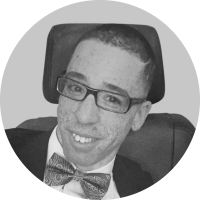How are People with Disabilities Shown on Screen?

How are People with Disabilities Shown on Screen?
Ever wonder how movies and TV shows portray people with disabilities? It's a crucial topic, and I just read this interesting article about it for reasons.
The article talks about how things are improving, but there's still work. For example, it mentions Race Eberhardt, an actor with Down syndrome who plays a lead role in "Strait Undercover." That's awesome! But, the article also points out that we still see a lot of old stereotypes.
Think about it: How often have you seen a character with a disability played by an actor without a disability? Or maybe the character is always shown as sad or needing help? The article says it's super important to have "authentic casting"—actors with disabilities playing characters with disabilities. This helps tell authentic and engaging stories and breaks down those old, harmful stereotypes.
The article gives some examples. "CODA" and "Doctor Who" get a thumbs up for doing a good job. However, a movie called "Music" got criticized because it didn't cast an autistic actress for an autistic role.
What do you think? Have you seen any good or bad examples of disability representation on screen? Read more here.
Comments
-
Great article—excellent points! I agree that while there’s been progress in representing the Disability Community on screen, there’s still a long way to go.
One film that stands out to me is Crip Camp, co-directed and co-produced by James LeBrecht, a member of the Disability Community and a leader in the 504 Sit-In protests. The documentary offers powerful first-person accounts and original footage from the protests, highlighting the significance of the movement through the voices of those who lived it.
In contrast, the mini documentary The Path Forward: Remembering Willowbrook—produced by the NYC Council on Developmental Disabilities—falls short in meaningful representation. While it covers the impact of Willowbrook: The Last Great Disgrace (the 1972 exposé by Geraldo Rivera that led to deinstitutionalization efforts and major policy shifts), the newer documentary is largely told from the perspectives of non-disabled individuals. This lack of disabled voices in both narration and production felt like a missed opportunity, especially when compared to Crip Camp, which was led by members of the community it represents.
Authentic representation matters—not just in front of the camera, but behind it too.
The Pathforward: Remembering Willowbrook
Crip Camp
2
Categories
- All Categories
- What is Research at Open like?
- 2 What would you like to research?
- How can Open improve our community research?
- 16 Open Community (Open to All)
- 7 Welcome and Introductions
- 6 Coffee Lounge
- 1 Competitions and special offers
- 1 Open Community Help and Support
- My Community Groups
- 440 My Life's Discussions
- 45 Workplace and Employment
- 44 Education and Skills Development
- 30 Entertainment At Home
- 24 Entertainment Out and About
- 49 Travel and Transport
- 15 Built Environment - Access to Buildings and Urban Spaces
- 22 Fitness, Sports and Adventure
- 9 Cooking, Eating and Nutrition
- 13 Arts, Music and Crafts
- 24 Fashion and Beauty
- 22 Home and Daily Basics
- 6 Relationships and Sex
- 34 News and Current Affairs
- 10 Banking and Finance
- 25 Policy and Legislation
- 30 Healthcare
- 13 Shopping
- 5 Housing
- 7 Suggest a new discussion
- Education and Training Opportunities
